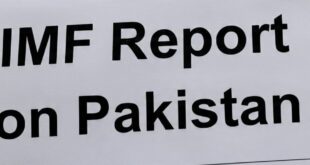
The electricity consumers are set to pay capacity payments up to Rs 2.8 trillion during the upcoming financial year 2024-25.
The capacity payments account for 70 percent of electricity tariff for the consumers whereas the energy price amounts to 30 percent.
These capacity payments are linked with dollar indexation and therefore, these capacity payments had gone up due to depreciation of rupee against dollar during the recent year.
It is also alarming that even those Power plants were getting capacity payments in dollars that had invested in rupees in Pakistan.
During the current financial year, the capacity payments have been estimated to Rs 2.1 trillion.
The capacity payments are made to those power plants who remain idle and get payments without generating a single unit due to faulty agreements.
The CPPA-G presented different scenarios of electricity rates for the upcoming financial year with expected hike of Rs 5 per unit to burden the consumers with Rs 310 billion.
During the presentation in a public hearing conducted here, it was informed that energy purchase price (EPP) amounted up to Rs 1.3 trillion and capacity payments stood at Rs 2.146 trillion for next financial year.
The officials of CPPA-G informed that capacity payments had been varying Rs 2.1 to Rs 2.8 trillion.
Regarding the demand projection, power ministry officials said that GDP target of 3.5 percent had been taken that was in line with IMF projection.
They said that planning commission was asked to provide GDP growth projection for next financial year but it had not provided figures.
So, the reliance was made on the GDP figures which IMF had projected for Pakistan.
During the hearing, it was noted that CPPA-G had submitted electricity demand projections without going into proper work.
About net metering, it was informed that 83 MW of electricity from solar was being added to the national grid.
However, they did not have the figures of electricity generation through solar that was off the grid.
The work on net metering started in 2015 but it expedited during the last year.
As many as 870 MW from solar net metering had been added during the last eight months.
It was also noted that solar based electricity was also going to replace in industrial base.
Nepra stressed on actual demand of electricity to reach out realistic price of electricity for budgeting.
It was informed the consumers were reducing consumption of electricity due to higher electricity prices.
The intervenors said that several industrial units had shut down due to higher electricity prices.
Therefore, consumption of electricity would fall further due to expected increase in electricity rates during the next financial year.
It was also alarming that despite the capacity payments were rising, more IPPs were being installed.
It was informed that three more IPPs had been connected to national grid. The Central Power Purchasing Agency (CPPA) has submitted the projected power purchase for the fiscal year (FY) 2024-25.
In its petition, submitted on behalf of DISCOs, the total power purchase price for the next fiscal year has been projected to be Rs3.58 trillion, which is approximately Rs310 billion higher than the existing power purchase price (PPP) of Rs3.28 trillion.
CPPA-G has presented the Projected Power Purchase Price report for FY 2024-25, outlining seven scenarios for the Authority’s consideration, aimed at determining the tariff at the consumer end for the fiscal year 2024-25.
The scenarios revolve around different levels of demand growth (ranging from 3% to 5%), exchange rates (with the rupee valued at 275 and 300), and hydrological conditions during normal and dry seasons.
The CPPA projection suggests that electricity consumers will bear 2.40% of the US inflation, which is proposed to be incorporated into the tariff, 12.20% of domestic inflation, an interest charge of 21.37% and 5.31% on electricity purchases, and a market operator fee of Rs3.48 per unit.
Similarly, fuel costs ranging from Rs8.61 per unit to Rs9.34 per unit have been proposed under various scenarios. Additionally, capacity charges are projected to range from Rs15.49 per unit to Rs17.42 per unit for 2024-25.
It’s worth mentioning that during the ongoing fiscal year, capacity payments accounted for 71% of the power purchase price (PPP), while energy costs constituted approximately 29% of the total projected PPP.
For 2023-24, the capacity charges were Rs16.22 per unit, whereas energy charges were Rs6.73 per unit. The total power purchase price under seven scenarios has been projected to range from Rs25.03 per unit to Rs27.11 per unit for the next fiscal year.
The increase in PPP has been projected to range from Rs2.07 per unit to Rs4.16 per unit under various scenarios. In addition to the PPP, the base tariff also includes the distribution margin for XWDISCOs, as well as transmission and distribution losses.
The distribution margins of XWDISCOs for the ongoing fiscal year are Rs3.10 per unit, which is also likely to go up by 15 to 20%. To ensure a fair and informed decision, NEPRA has scheduled a hearing for May 23, 2024.
However, if approved, consumers of DISCOs could face a staggering additional financial strain of Rs337 billion to Rs358 billion in the upcoming fiscal year (2024-25).
 BeNewz
BeNewz




